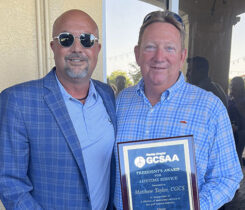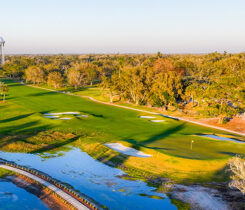Less stressful and more successful renovation projects
The pace of golf course renovation is picking up, particularly in south Florida where Kipp Schulties of Kipp Schulties Golf Design has developed a thriving business specializing in renovations. I had the good fortune of listening to Schulties speak to a group of club managers attending the Club Managers Association of America (CMAA) Best Management Institute–Golf about golf course renovation and I want to share some of Kipp’s key points for successful renovations.
According to Schulties, the reasons for undertaking a renovation vary from club to club but generally are driven by one or more of the following:
Competition. Golf is a competitive business and clubs need to offer a quality product to attract and retain golfers or risk losing business.
Playability. In south Florida, memberships are aging and golf courses need to be adapted to the skills of older players, which includes eliminating forced carries.
Age of the golf course. Many courses in south Florida are 30 to 35 years old, and the irrigation systems, drainage systems and grass varieties need to be updated.
Outdated design. While a course needs to be playable for golfers of all skill levels, many courses were built before the huge advances in ball and club technology, and in many cases the turning points of dogleg holes and fairway bunkers are not far enough from the back tees to remain a challenge for skilled players.
Water use. South Florida weather is characterized by distinct wet and dry seasons, making irrigation essential to maintain turf. Water rationing has been mandated in some years, and golf courses must be prepared to use water efficiently.
Americans with Disabilities Act (ADA). A key component of ADA as it applies to golf courses is the removal of barriers to allow everyone access to play the golf course.
The experience gained from many renovation projects leads Schulties to offer the following advice on making a club’s renovation committee successful. The first step is to identify and select a “flag bearer” for the renovation project. The flag bearer should be someone passionate about the renovation and who is well liked and respected by all the members. Selection of the remaining renovation committee members should be done with care. The committee should include people with a construction and/or civil engineering background, people with legal experience, people with experience in finance and men and women golfers representing all skill levels.
Early in the renovation planning process, Schulties requests the club identify four focus groups composed of low-handicap women, low-handicap men, high-handicap women and high-handicap men. Schulties meets with each of these focus groups separately, and hole-by-hole asks them the same questions: “What do you like about the hole?” “What do you dislike about the hole?” and “What would you change about the hole?” Using this process, Schulties gathers much of the information he needs to improve each hole. Schulties also shared that he has learned from focus groups to respect what the members like, and to leave that feature or characteristic alone.
Schulties finished his presentation by discussing a few agronomic keys to a successful renovation. He listed drainage as No. 1. Drainage is important on all courses, but particularly so in south Florida, where the water table is so close to the surface.
Making sure the size, shape and orientation of the green are appropriate for the intended shot is critical, as is providing a sufficient number of pin locations. Kipp is an advocate of multiple tees. Many of his designs have six or eight sets of tees per hole. He believes multiple sets of forward tees are critical to keep less skilled or older golfers playing and to bring new players to the game. He devotes a significant amount of time and energy to placement and shape of bunkers.
I and the other attendees at the CMAA BMI-Golf gained a greater appreciation of successful golf course renovation through Schulties sharing his experience and expertise as a golf course architect.
Kipp Schulties can be reached at Info@KPGolfDesign.com for more information.











